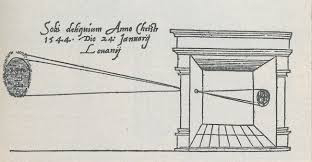1. Study existing cameras: Start by researching and studying various types of cameras available in the market. Understand their features, components, and how they work. This will provide you with a solid foundation for your own invention.
2. Identify a purpose or improvement: Determine the specific purpose or improvement you want your camera to serve. It could be enhancing image quality, introducing a new functionality, improving portability, or addressing a specific need.
3. Conceptualize the design: Use your creativity and knowledge to conceptualize the design of your camera. Consider factors such as size, shape, ergonomics, and user interface. Sketch out your ideas on paper or use computer-aided design (CAD) software to create detailed designs.
4. Determine the components: Identify the essential components your camera will require. This typically includes a lens, image sensor, shutter mechanism, viewfinder or display, storage medium, and power source. Research and select appropriate components that align with your design and purpose.
5. Build a prototype: Once you have a clear design and component list, start building a functional prototype of your camera. This may involve acquiring or assembling the necessary parts, soldering electronic components, and integrating them into a cohesive unit. It's recommended to take a systematic approach, starting with the core functionalities and gradually adding features.
6. Test and iterate: Test your prototype extensively to identify any design flaws or areas for improvement. Evaluate image quality, ease of use, durability, and any specific features you aimed to enhance. Make necessary adjustments, modifications, or redesigns based on the test results.
7. Refine the design: Based on the feedback from testing, refine the design of your camera to address any issues or limitations. This may involve tweaking the internal components, improving the user interface, optimizing image processing algorithms, or making changes to the physical structure.
8. Manufacturing considerations: Once you are satisfied with the functionality and design of your camera, consider the manufacturing process. Research manufacturing techniques, materials, and suppliers that can help bring your camera to mass production. Collaborate with experts in manufacturing and assembly processes to ensure scalability and cost-effectiveness.
9. Protect your invention: If your camera invention has unique features or innovations, it is important to protect your intellectual property. Consult with a patent attorney to explore the possibility of obtaining a patent for your invention.
10. Marketing and commercialization: Develop a marketing strategy to introduce your camera to the market. Identify your target audience, highlight the unique features and benefits, and consider partnerships with distributors or retailers. Create a compelling brand and marketing materials to attract customers and generate interest in your invention.
Remember, inventing a camera is a complex and multidisciplinary process that requires expertise in various fields. It's often beneficial to collaborate with engineers, photographers, designers, and other experts who can provide valuable insights and contribute to the development of your invention.
Thank you so much









No comments:
Post a Comment